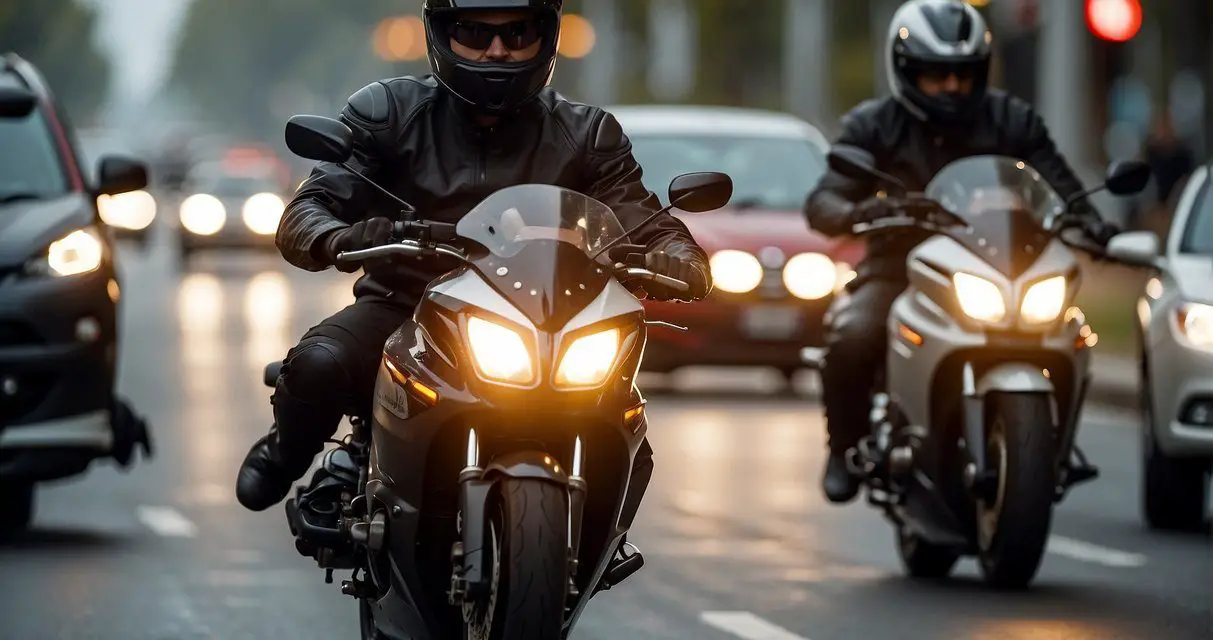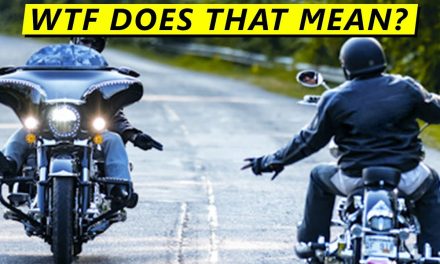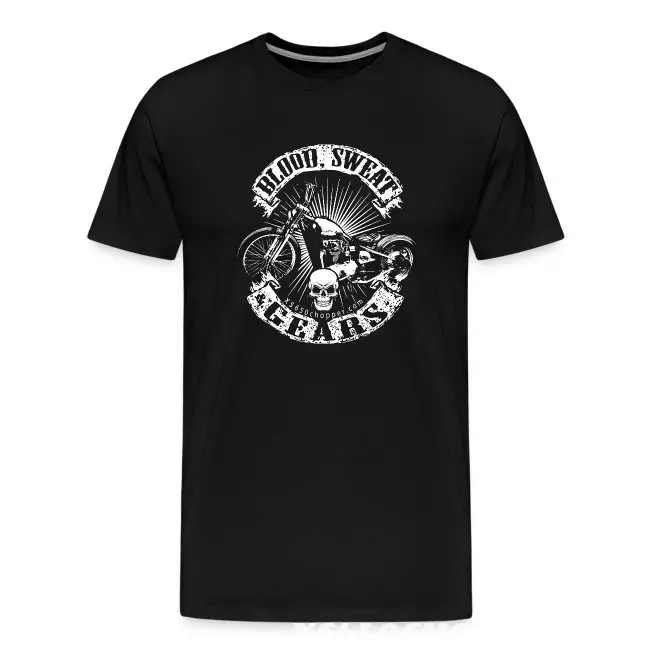Embarking on the journey of motorcycling can be thrilling, but it’s crucial to remember that it also comes with a responsibility to yourself and others on the road. As you join the ranks of two-wheeled enthusiasts, adopting certain habits will not only ensure your safety but can also tremendously enhance your riding experience. Think of these habits as your personal toolkit—skills that, when practiced regularly, become second nature and form the foundation of a fulfilling and secure life on two wheels.
From the get-go, understanding your machine and the gear you wear is as important as the ride itself. A pre-ride check can prevent mishaps and wearing the right protective gear can be a game-changer during unforeseen events. Additionally, developing a keen road sense and mastering defensive riding techniques are indispensable. On the road, your mindset should be proactive, always anticipating scenarios that could lead to potential hazards.
And let’s not forget the joy of riding. As you cultivate these habits, you’ll find that they not only contribute to your well-being but also to the pure enjoyment of every journey. Whether it’s the freedom of an open road or the camaraderie among fellow riders, motorcycling offers experiences that are unique to its culture. So, gear up, ride with awareness, and most importantly, enjoy every mile with confidence knowing you’ve laid the groundwork for many great rides ahead.
1: Not Sitting In The Middle Of Intersections

When approaching an intersection on your motorcycle, it’s essential to avoid sitting in the middle during a red light or when traffic is stopped. This habit is critical for several reasons:
- Safety: Remaining in the middle makes you vulnerable to rear-end collisions. Positioning yourself to the side can provide an escape route and increases visibility to other drivers.
- Visibility: By not sitting directly behind a car, you reduce the risk of being in a driver’s blind spot. You become more visible to traffic that may approach from either direction.
Strategy:
- As you approach an intersection, reduce your speed cautiously.
- Choose a lane position that maximizes your visibility to other drivers and allows you to monitor the intersection.
- Keep your motorcycle in gear and be ready to move if necessary.
Remember, intersections are high-risk areas for motorcyclists. Your strategic positioning could make all the difference in avoiding accidents. Stay alert, be visible, and keep these tips in mind each time you come to an intersection. Protect yourself and your journey on the road.
2: Ride As If You Are Invisible

When you’re on your motorcycle, riding as if you’re invisible can greatly enhance your safety. This means you should always assume that other drivers on the road cannot see you.
Visibility:
- Wear bright or reflective clothing: This makes it easier for others to spot you.
- Use your headlight: Even during the day, a lit headlight can help you stand out.
Positioning:
- Lane placement: Ride in the part of the lane where you are most likely to be seen and can maintain a safe distance from other vehicles.
- Avoid blind spots: Stay out of areas where you might be obscured from a driver’s view, like directly behind or beside a car.
Predictive riding:
- Anticipate others’ actions: Be ready to respond to other drivers’ potential mistakes.
- Plan escape routes: Always have a way out in case you need to avoid a sudden hazard.
By adopting the habit of riding as if you are invisible, you’re taking proactive steps to protect yourself. Remember, it’s your responsibility to ensure your presence on the road is known and that you’re prepared for any situation. Stay alert, stay bright, and stay safe.
3: Dragging Your Brake in Slow Tight Turns

As you navigate through slow tight turns on your motorcycle, maintaining stability is key—this is where the technique of dragging your brake comes into play. Specifically, it’s about using your rear brake gently while in these tricky situations.
Here’s a simple breakdown:
- Gentle Pressure: Apply mild pressure on the rear brake. It’s not about bringing the bike to a halt, but rather creating a degree of resistance that improves balance.
- Steady Throttle: Keep a consistent throttle. The combination of steady throttle and slight braking adds stability.
- Focus on Balance: Your bike tends to wobble at low speeds, so this technique helps keep things under control.
- Practice Makes Perfect: Start in a safe area, like an empty parking lot, to get the hang of it before hitting the roads.
Remember, too much brake can cause the bike to stall, and too little may not provide the desired stability. It’s about finding that sweet spot where your motorcycle feels most manageable during the turn.
4: Keeping To The Right Or Left Of Your Lane

When you’re riding a motorcycle, positioning within your lane is key to your safety and the flow of traffic around you. Here’s why sticking to the right or left of your lane is a habit worth developing:
Visibility: Keeping to one side of the lane rather than the middle can increase your visibility to other drivers. By positioning yourself closer to the dividing lines, you make it easier for drivers both in front of and behind you to see you.
- Right Side: This can be beneficial when you want to be visible to drivers merging onto the highway.
- Left Side: Ideal when you wish to steer clear of potential hazards coming from the roadside such as opening car doors or pedestrians.
Escape Routes: Consistently riding on the right or left third of your lane provides potential escape routes. Should a situation on the road escalate quickly, you’ll have more options to maneuver safely.
Footnotes on Lane Positioning:
- Always be aware of the condition of your chosen side of the lane; road debris tends to accumulate along the sides.
- In curves, your lane position can help increase visibility through the turn and help drivers see you and predict your path.
Remember: Different situations call for different lane positions. Adapting to the conditions and context of your ride will keep you safer. Always check your mirrors and over your shoulder before making any lateral movements within your lane.
5: A Smooth And Well Applied Throttle

Mastering the throttle is essential for maintaining control and ensuring a safe ride. Here’s how to smoothly apply throttle as a new motorcyclist:
- Get a Feel for the Throttle: Familiarize yourself with the response of your throttle by practicing in a safe environment. Gradually increase and decrease throttle to understand how your motorcycle reacts.
- Maintain Steady Acceleration: When increasing speed, do so smoothly. Jerky throttle inputs can cause instability, reducing your control over the motorcycle.
Gentle Roll-On and Roll-Off:
- Roll-on: When entering a curve, roll the throttle on gently to stabilize the bike and improve traction.
- Roll-off: If needing to slow down, ease off the throttle just as gently to avoid abrupt changes in speed.
Anticipate Throttle Response:
- Remember, different gears can affect throttle sensitivity.
- Be mindful during gear changes to maintain a gentle transition.
- Consistent Throttle in Turns: It’s important to keep a consistent and smooth throttle throughout turns to ensure the bike’s stability and avoid unsettling the suspension.
Practicing Throttle Control:
- Start with straight-line riding on a quiet road or empty parking lot.
- Progress to gentle curves, focusing on the smooth application of acceleration.
Remember, your throttle is a direct line to your motorcycle’s power. Embrace it gently, and it will reward you with a fluid, enjoyable ride.
6: Keeping An Eye On Your 6

When you’re on the road, your “6”—a term borrowed from military jargon, meaning your back—is as crucial as the road ahead. Always be aware of what’s happening behind you. This habit is not just about checking your mirrors regularly, but also about understanding the bigger picture of the traffic around you.
- Check Mirrors: Make it a natural part of your riding routine to glance in your mirrors every few seconds. This way, you stay informed about the traffic that’s approaching from behind.
- Head Checks: Before making lane changes or maneuvers, perform a physical head check to confirm your blind spots are clear. This is because mirrors can’t capture everything, and motorcycles tend to have larger blind spots than cars.
- Situational Awareness: Keep track of vehicles that may be in your blind spots for an extended period. Be especially vigilant if you notice drivers who are behaving erratically.
- Anticipate Actions: Based on your observations, try to anticipate the actions of other drivers. If a vehicle is speeding up quickly behind you, be prepared to react and make space if necessary.
Remember, maintaining awareness of your surroundings is a key aspect of defensive riding. By keeping an eye on your 6, you’re not only protecting yourself but also actively preventing potential accidents. Ride smart, and stay safe.
7: Learning To Not Waddle

As you become more comfortable with your motorcycle, you’ll notice that balance is key, especially at low speeds. One common issue new riders encounter is the tendency to “waddle” — walking the bike with their feet during maneuvers like parking or slow turns. Here’s how to build the habit of keeping your feet up and achieving smooth control.
- Focus on Balance: Practice balancing your bike at low speeds. The more you do this, the less you’ll need to rely on your feet for support.
- Use the Friction Zone: Get familiar with your clutch’s friction zone. This is the range within the clutch lever’s movement where the gear is partially engaged, providing you controlled power to balance at low speeds.
- Look Ahead: Keep your eyes up and look where you want to go. Your bike will follow your gaze, making it easier to maintain balance.
- Stay Relaxed: Gripping the handlebars too tightly can lead to shaky control. Keep a relaxed posture, with light but firm grip.
By consistently practicing these techniques, you’ll find that you no longer need to waddle. Keeping your feet on the pegs and controlling your motorcycle’s balance becomes second nature, leading to a more confident and enjoyable riding experience. Remember, like any skill, it takes time to learn, so be patient and persistent in your practice.







